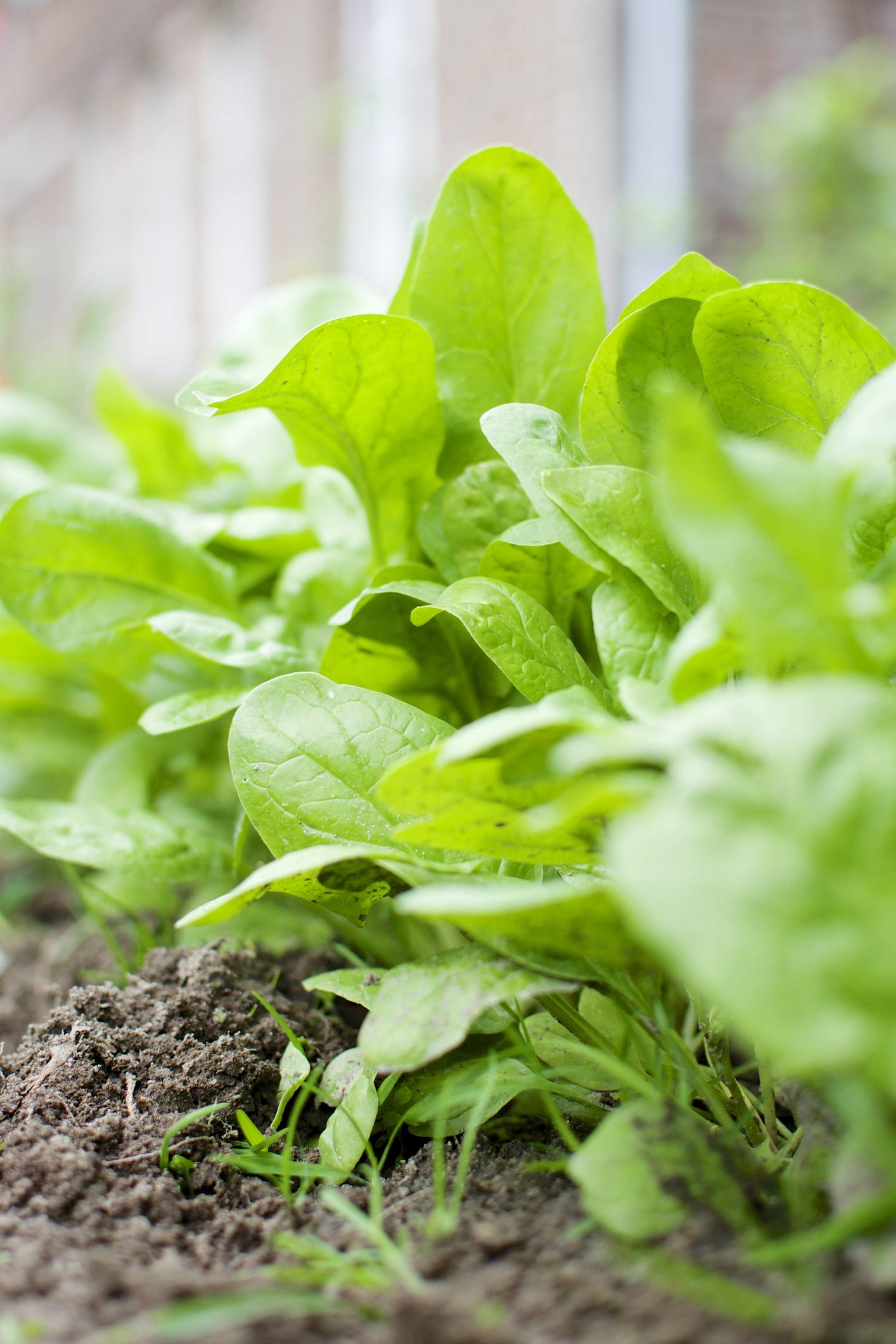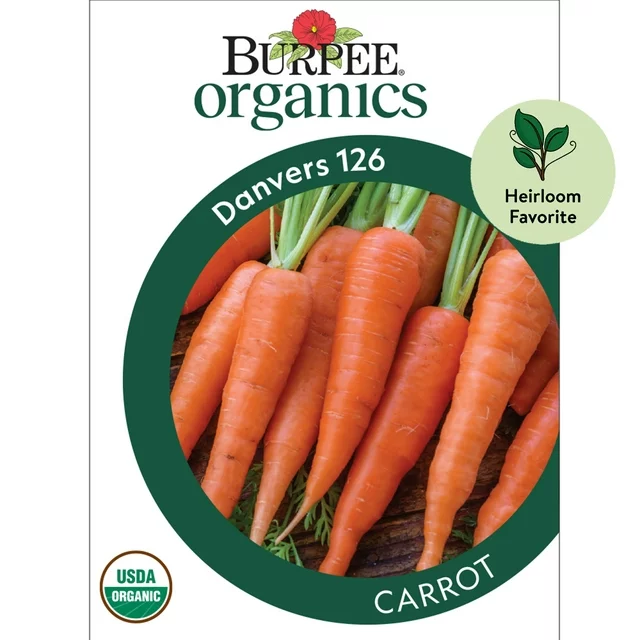9 Vegetables to Sow in January to Get You Back Into the Gardening Game
Start planting these vegetables today if you want a bumper crop next season


January might be one of the most miserable months for weather, but that doesn't mean a bit of gentle gardening isn't off the cards. If your New Year's resolution was to reignite your gardening hobby (or to start it anew), the first month of the year offers plenty of jobs to ease you back into the swing of things.
Of those, one of the main ones is sowing some vegetable seeds. If you want to turn your backyard into a delicious edible garden in time for next season, now is the time to get planting (and it will help kickstart those new healthy eating habits you've set your mind to, as well).
'When the new year arrives, cold temperatures may discourage even seasoned growers, however, January offers the perfect conditions for planting select vegetables that not only withstand frosty nights but thrive in cool conditions,' explains Lina Cowley, gardening expert at Trimmed Roots. 'Planting these cold-tolerant vegetables now means you’ll have a bountiful harvest ready just when warmer weather arrives.'
To help you decide what to sow this month for a bumper harvest in 2024, here are nine vegetables to introduce to your modern vegetable garden that we think you'll love.
1. Lettuce

With seemingly endless months of long nights and cold temperatures, you might be craving a bit of a vitamin hit. A fresh, crisp salad is one of the most nutritious options out there, the staple of that being a bundle of crunchy lettuce leaves, so why not start growing your own in your backyard?
'January is an excellent time to sow lettuce as it thrives in cool temperatures,' explains Tony O'Neill, expert gardener at Simplify Gardening. 'To plant, choose a well-drained location and sow seeds 1/4 inch deep, keeping the soil consistently moist. Expect to harvest in 40-60 days, depending on the variety.'
Zahid Adnan of The Plant Bible agrees lettuce is a great choice for anyone within hardiness zones 4-9 since it offers a quick, early harvest. 'In warmer zones, you can start sowing directly outdoors, and in colder zones, begin indoors,' he says. 'Lettuce germinates well in cool temperatures and can be harvested as early as 8 weeks after sowing, offering fresh greens right from your garden.'
The Livingetc newsletters are your inside source for what’s shaping interiors now - and what’s next. Discover trend forecasts, smart style ideas, and curated shopping inspiration that brings design to life. Subscribe today and stay ahead of the curve.
2. Fava Beans
'Fava beans are one of the best vegetables to plant in January,' explains Lina Cowley of Trimmed Roots. 'Native to the Mediterranean region, these hardy beans can withstand cold snaps and even a light frost.' When it comes to sowing, she says that fava bean seeds can be planted as early as late January in all but the coldest climates. 'These heavy nitrogen feeders enrich the soil, making them excellent cover crops too,' she adds.
You won't have to wait long before you can harvest the fruits of your labor, either. 'Once warmer spring weather arrives in March and April, your fava beans will take off,' Lina explains. 'Harvest the young pods while they are bright green and tender. Before you know it, you’ll have a prolific crop ready for fresh eating!' The best part? Fava beans are also suitable for vegetable container gardening making it easier than ever to get started on your own edible garden.
3. Peas

As small and delicate as the vegetable might be, peas are really hardy plants making them a great choice for your winter gardening anywhere within hardiness zones 3-10. 'January is an ideal time for sowing peas in warmer regions (Zones 8-10),' says Zahid. 'For colder areas, starting them indoors works great. They are cold-hardy and can be transplanted outdoors as soon as the soil is workable.'
Remember that peas, like fava beans, are vertical growers so you'll need to support them with a form of trellis for them to climb (bamboo canes work great). 'Peas planted now will be ready for harvest in late spring, offering a sweet, early bounty,' notes Zahid.
4. Onions
Onions are a staple vegetable in nearly every meal, and there's nothing quite as rewarding as heading out into your backyard to grab a homegrown one to fry, roast, sautee, or stew for your evening meal.
Since these are a root vegetable, you'll need to start these seeds indoors as the ground will still be too cold in most regions. (When it comes to jobs to do in your backyard in January, indoor seed planting is a key task for any seasoned gardener.) 'They require a longer growing season and starting them now ensures they'll be ready for transplanting in spring,' explains Zahid. 'Harvest typically happens in late summer, and onions are a staple in any kitchen garden.'
5. Cabbage & cauliflower

For a hearty and nutritious dinner in the depths of winter, cabbage and cauliflower are a must. These closely related brassicas go just as well on a plate as they do companion plants in the soil, so why not consider growing them together in your raised bed or garden border after starting the seeds indoors?
'Get a head start on these spring favorites by setting out transplants in January,' says Lina. 'Cabbage and cauliflower plants need consistently cool temperatures to produce properly which makes winter and very early spring perfect for growing these tasty brassicas.'
She recommends waiting for a stretch of dry weather when daytime temperatures reach 60-65° Fahrenheit. 'Plant your cabbage and cauliflower transplants at least six weeks before your last expected frost date,' she adds. 'This will give the plants enough time to mature for a late spring harvest.'
6. Carrots
Carrots are another mealtime staple, and another great option to get started on this month. 'Carrots prefer cooler weather for germination, making January an ideal time,' explains Tony. 'Sow seeds directly in the soil, providing loose and well-drained soil for optimal root development.' The good news is you'll have a delicious crop in next to no time. According to Tony, they should be ready for harvest in around 70-80 days.
For a neatly and evenly spaced row of veggies, try the genius carrot planting hack using a cornstarch paste and a piping bag - a trick that also minimizes the need for 'thinning' (removing smaller carrots from the soil to give the others room to grow). Carrots also make an excellent companion plant to onions, too.
7. Spinach & Mustard Greens

'Tasty and nutritious spinach and mustard greens are two excellent cool-weather crops for January planting,' says Lina. 'You can sow seeds directly in the garden or use transplants.' We love chopping these greens into salads or blending them into juices for a serious health kick when we need it most.
According to Lina, both spinach and mustard prefer full sun but can tolerate partial shade, which is why they're paired together on this list. Being small, low-growing leaves, they're also great options for container gardening, too. 'One of the best things about leafy greens is they tolerate frost and freezing,' she adds. 'Established plants will go dormant but regrow vigorously as the weather warms which means you can harvest fresh greens all winter long in mild climates!'
8. Radishes
Besides their unique flavor, one of the best things about radishes is that they can be grown throughout the colder months of the year. 'Crisp and spicy radishes are a quick-growing crop perfectly suited for January planting,' says Lina. 'In fact, prolonged exposure to cold weather makes radishes extra juicy and pungent!'
Lina suggests sowing radish seeds, which thrive in raised beds and containers, every two weeks for a continuous supply. 'Loosening the soil and adding aged compost or manure boosts healthy growth and makes seasonal harvests possible as soon as three weeks from seeding,' she notes. 'Keep seedlings consistently watered for fast growth.'
9. Broccoli

Last but not least, the humble broccoli is always a mealtime favorite, and it's one of the best options to sow this month, too. Suitable to sow in hardiness zones 3-10, there's little reason why you can't grow your own in your modern garden - just remember to start seeds indoors if you're in a colder climate.
'Broccoli thrives in cool weather, and January planting allows for a timely spring harvest,' says Tony. 'Start seeds indoors and transplant when they have three to four true leaves. Provide rich, well-drained soil and harvest when the heads are firm and tight, typically around 70-100 days.'
With these expert suggestions, you'll be on your way to having an edible oasis in your backyard in next to no time. There's also no better time to get stuck into a new hobby as we plan for the year ahead. As Zahid notes: 'Each of these choices is not only aligned with the practicalities of January sowing but also offers an early sense of achievement and joy from gardening, which is essential for keeping up with New Year resolutions.'

Lilith Hudson is a freelance writer and regular contributor to Livingetc. She holds an MA in Magazine Journalism from City, University of London, and has written for various titles including Homes & Gardens, House Beautiful, Advnture, the Saturday Times Magazine, Evening Standard, DJ Mag, Metro, and The Simple Things Magazine.
Prior to going freelance, Lilith was the News and Trends Editor at Livingetc. It was a role that helped her develop a keen eye for spotting all the latest micro-trends, interior hacks, and viral decor must-haves you need in your home. With a constant ear to the ground on the design scene, she's ahead of the curve when it comes to the latest color that's sweeping interiors or the hot new style to decorate our homes.


